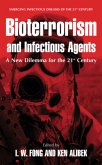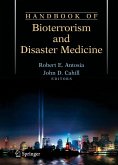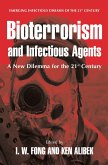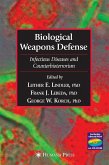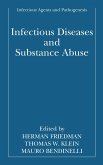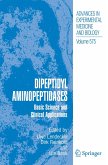The purpose of this book is to bring together, in a single volume, the most up-to-date information concerning microbes with potential as bioterrorist weapons. The primary audience includes microbiologists, including bacteriologists, virologists and mycologists, in academia, government laboratories and research institutes at the forefront of studies concerning microbes which have potential as bioterrorist weapons, public health physicians and researchers and scientists who must be trained to deal with bioterrorist attacks as well as laboratory investigators who must identify and characterize these microorganisms from the environment and from possibly infected patients.
The threat of bioterrorism has become a major challenge for the twenty-?rst century. However, the potentials of infectious agents as bioweapons have been recognized for centuries. Throughout history there have been attempts to i- tiate infectious disease outbreaks and epidemics during warfare. In the last decade the attention of the biomedical community, as well as governments and the United Nations, has increasingly focused on the threat of bioterr- ism, especially the use of biological and/or chemical weapons against military and civilian populations. As an example, there is now much interest conce- ing microbial infection and bioterrorism in the medical microbiology and - munologycommunities. Thisvolumeaddressessuchconcernsandemphasizes bothbasicandclinicalconcepts,aswellasproblematicimplicationsofinfection by various microbes now recognized as potential bioterrorism agents. The ?rst chapter by Drs. Andrew Canons, Philip Amuso, and Burt And- son from the University of South Florida is an overview of the biotechnology of bioterrorismbothinthepublichealthresponsetopossibleactsofbioterrorism, aswellasfortheconcernsaboutthemisuseofbiotechnology. Thesecondch- ter is a historical perspective of microbial bioterrorism by Dr. Steven Morse, Director of the Bioterrorism Division at the Center for Disease Control and Prevention in Atlanta, GA. This chapter describes in detail historical aspects concerning the early use of biological agents in warfare, development and international conventions to prohibit the use of such weapons, and a brief - scription of important incidents of infectious agents as bioterrorist agents and use during the last few centuries. The next chapter by Dr. Sandra Gompf from the University of South Florida discusses the role of public health physicians and infectious diseases specialists in the control of microbial bioterrorism.
The threat of bioterrorism has become a major challenge for the twenty-?rst century. However, the potentials of infectious agents as bioweapons have been recognized for centuries. Throughout history there have been attempts to i- tiate infectious disease outbreaks and epidemics during warfare. In the last decade the attention of the biomedical community, as well as governments and the United Nations, has increasingly focused on the threat of bioterr- ism, especially the use of biological and/or chemical weapons against military and civilian populations. As an example, there is now much interest conce- ing microbial infection and bioterrorism in the medical microbiology and - munologycommunities. Thisvolumeaddressessuchconcernsandemphasizes bothbasicandclinicalconcepts,aswellasproblematicimplicationsofinfection by various microbes now recognized as potential bioterrorism agents. The ?rst chapter by Drs. Andrew Canons, Philip Amuso, and Burt And- son from the University of South Florida is an overview of the biotechnology of bioterrorismbothinthepublichealthresponsetopossibleactsofbioterrorism, aswellasfortheconcernsaboutthemisuseofbiotechnology. Thesecondch- ter is a historical perspective of microbial bioterrorism by Dr. Steven Morse, Director of the Bioterrorism Division at the Center for Disease Control and Prevention in Atlanta, GA. This chapter describes in detail historical aspects concerning the early use of biological agents in warfare, development and international conventions to prohibit the use of such weapons, and a brief - scription of important incidents of infectious agents as bioterrorist agents and use during the last few centuries. The next chapter by Dr. Sandra Gompf from the University of South Florida discusses the role of public health physicians and infectious diseases specialists in the control of microbial bioterrorism.
From the reviews:
"This edited volume focuses on the biology of potential bioterrorism agents. ... One of the best characteristics of this book is the ... list of references at the end of each chapter, which researchers and medical practitioners may find useful. Summing Up: Recommended. Upper-level undergraduates and above." (K. H. Jacobsen, CHOICE, Vol. 43 (10), June, 2006)
"This edited volume focuses on the biology of potential bioterrorism agents. ... One of the best characteristics of this book is the ... list of references at the end of each chapter, which researchers and medical practitioners may find useful. Summing Up: Recommended. Upper-level undergraduates and above." (K. H. Jacobsen, CHOICE, Vol. 43 (10), June, 2006)


